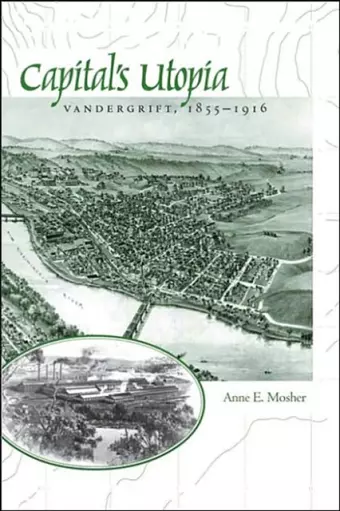Capital's Utopia
Vandergrift, Pennsylvania, 1855-1916
Format:Hardback
Publisher:Johns Hopkins University Press
Published:31st Mar '04
Currently unavailable, and unfortunately no date known when it will be back

Mosher blends her skills as a geographer, historian, and storyteller to create a deep history of a most unique locale. In Capital's Utopia, the story of Vandergrift becomes a crucial and unexplored intersection between industrial land use and community planning all wrapped in the issues of economic class and paternalism that defined the Gilded Age. Through iron, railroad, and finally steel, readers will follow Vandergrift's surprising relevance in the Olmsted tradition of community planning. Mosher makes superb use of primary historical sources, including tables utilizing demographic census and tax assessment data and a superb selection of maps, community diagrams, photos, and sketches from the original plans. -- Brian Black, The Pennsylvania State University
It is a window into an important period of industrial development and its consequences on communities and environments in the world-famous steel country of southwestern Pennsylvania.In the 1890s the Apollo Iron and Steel Company ended a bitterly contested labor dispute by hiring replacement workers from the surrounding countryside. To avoid future unrest, however, the company sought to gain tighter control over its workers not only at the factory but also in their homes. Drawing upon a philosophy of reform movements in Europe and the United States, the firm decided that providing workers with good housing and a good urban environment would make them more loyal and productive. In 1895, Apollo Iron and Steel built a new, integrated, non-unionized steelworks and hired the nation's preeminent landscape architectural firm (Olmsted, Olmsted, and Eliot) to design the model industrial town: Vandergrift. In Capital's Utopia: Vandergrift, Pennsylvania, 1855-1916, Anne E. Mosher offers the first comprehensive geographical overview of the industrial restructuring of an American steelworks and its workforce in the late nineteenth-century. In addition, by offering a thorough analysis of the Olmsted plan, Mosher integrates historical geography and labor history with landscape architectural history and urban studies. As a result, this book is far more than a case study. It is a window into an important period of industrial development and its consequences on communities and environments in the world-famous steel country of southwestern Pennsylvania.
The incorporation of historical geography enhances this engaging micro-study of US industrialization. Choice 2004 A richly written, vivid description of the complex relations between capital, individual agents, and place-making in a period of industrial restructuring. -- James Defilippis Labor History 2005 I highly recommend this book, thoroughly enjoyed reading it, and expect that many others will do the same. -- John Benhart, Jr. Pennsylvania Geographer 2005 Mosher's fine book examines one of the most important ways that technological change shapes human society. -- Anne Kelly Knowles Technology and Culture 2006 This is a wonderful book that places an important model city in the larger context of the constantly evolving societal and geographical relations between capital and labor. -- Dean Sinclair Journal of Cultural Geography 2006 Mosher has written an excellent book. Her prose is clear and unencumbered by jargon and appropriately illustrated with photographs, maps, and data tables. Cultural Geographies 2007
ISBN: 9780801873812
Dimensions: 229mm x 152mm x 24mm
Weight: 522g
272 pages